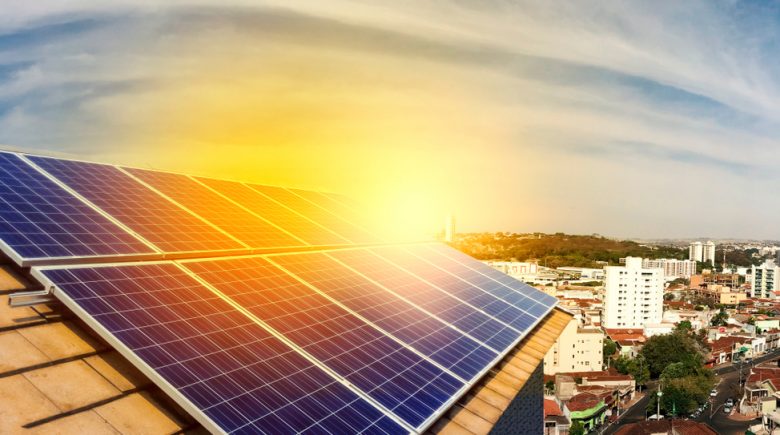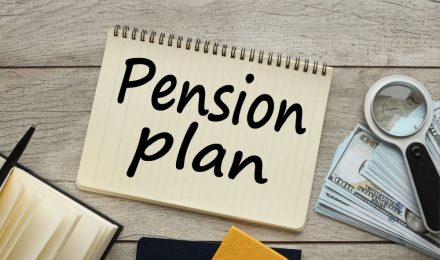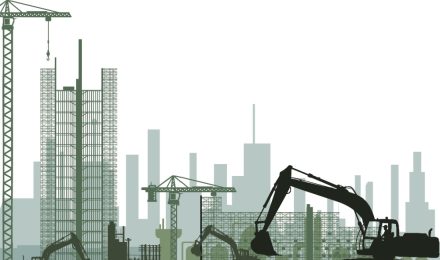Our society is increasingly becoming aware of the benefits of moving towards sustainable and ecologically “green” energy sources. These come in a myriad of forms, from the now common-place solar and wind energy to more obscure energy sources such as salinization membranes or algal decomposition of bio-mass. The most salient light in which to view these technologies is there benefits on the environment. However, they are also another benefit: economic viability.
In the early days of green technology, the production cost and relatively low durability of the power generation meant that the adoption of alternative energy required an altruistic intent. While the impact of the power generated was much more environmentally sound, the economics of traditional energy sources – namely coal, nuclear, and natural gas – could not be equaled.
As the technologies have continued to evolve, there has been a sea change in the economic viability of renewable energy sources. This applies at all scales, whether it be in a micro sense such as a home installation of solar panels, or in a macro sense such as investing in a company focused on alternative energy development. Let’s look at how a few of the most prominent renewable energy sources have evolved, and how you should assess their place in the current market.
Solar Energy Has A Bright Outlook
Photovoltaic power generation, or solar energy, is arguably the most prominent technology in the green energy space. During the 1980s, when large-scale solar panel production was beginning, they occupied a much more niche place in the market. Two primary factors initially prevented the large-scale implementation of solar panels: cost and durability.
The standard unit of cost in the solar panel industry is cost per watt. Early commercially available solar arrays had a cost of roughly $20 per watt of solar panel capacity. An average home requires roughly four-thousand watts of solar panels to sustainably function, meaning early costs could be upwards of $80,000 for a typical solar array. Currently, the average price per watt for solar energy is $2.80. In other words, the price has dropped a staggering 86%.
Another key advancement in technology is the durability of the panels themselves. Early panels would experience significant degradation in their ability to produce power. Often, a panel would only be producing half of its peak power ten years into its life cycle. The technology has now evolved to where this is no longer a significant consideration. Modern panels are projected to maintain upwards of 80% of their original capacity for decades to come.
The durability of solar panels is particularly important when considering the typical financing arrangement for solar installations. Solar arrays, whether they be small home systems or massive industrial installations, are generally financed for ten years. This becomes a very powerful factor because the panels are still producing at near-maximum capacity even after they have been fully paid for. In an industrial context, this means that a reasonably profitable short term investment becomes almost entirely profit after a single decade.
Certainly, the technology surrounding solar panels will continue to improve. However, the combined factors of cost efficiency and reliability lead clearly to the conclusion that in their current state, solar energy is a sound investment at any scale.
Wind Power Is Only Getting Bigger
Wind energy is another technological space where efficiency and durability are only improving. Early windmills – or wind turbines, as they are more technically called – suffered from many of the same stumbling blocks as solar arrays. However, numerous developments in material sciences have allowed wind turbines to not only be a sound source of energy, but also a sound investment.
Wind turbines are relatively simple devices, but their construction requires significant nuance to be efficient. At their most primitive, a wind turbine is little more than a propeller and an electric motor. When the wind causes the propeller to spin, the motor turns, and power is generated. Simple enough, right? Well, not exactly.
In the context of wind energy, efficiency requires two things: an efficient low-drag motor, and an extremely large propeller. Early iterations had primitive motors that required constant maintenance and featured high levels of resistance. Further, the available materials meant that the blades could simply not be large enough to reach crucial levels of efficiency. Current wind turbines are reaching heights of almost 700 feet – an achievement which is only possible with modern carbon fiber and kevlar engineering techniques.
Wind or Sun – Which One is the Safer Bet?
Between these two common renewable energy sources, an obvious question arises: which is the safer investment? There are advantages and drawbacks to each.
Running at peak efficiency, wind energy is more efficient and therefore more cost-effective. However, the implementation of wind energy is a more difficult proposition. Because they contain moving parts, wind turbines require more maintenance and have a higher failure rate compared to solar panels. Further, they are a more visible source of energy, meaning that seeking zoning and approval to install them can be a difficult task. While small solar installations are common, it is generally impractical to implement wind turbines at anything less than an industrial scale.
In comparison, solar energy is a staid and reliable technology. They are easier to implement regardless of scale and are often met with less resistance by communities and regulators. But even when new, a solar array will never demonstrate the peak levels of efficiency offered by a turbine farm.
Thus, which one constitutes a better investment is a question of investment philosophy. Wind turbines represent the high return – but potentially higher risk – investment option. In contrast, solar panels can be thought of as the government bonds of the energy world; while they may offer a lower peak return, their lack of risk may justify the delta. Ultimately there is not a losing proposition in either case. Regardless of whether you are researching renewable energy for home installation or as a means of investing in a larger company, there has never been a better time to make a financial investment in green technology
Our society is increasingly becoming aware of the benefits of moving towards sustainable and ecologically “green” energy sources. These come in a myriad of forms, from the now common-place solar and wind energy to more obscure energy sources such as salinization membranes or algal decomposition of bio-mass. The most salient light in which to view these technologies is there benefits on the environment. However, they are also another benefit: economic viability.
In the early days of green technology, the production cost and relatively low durability of the power generation meant that the adoption of alternative energy required an altruistic intent. While the impact of the power generated was much more environmentally sound, the economics of traditional energy sources – namely coal, nuclear, and natural gas – could not be equaled.
As the technologies have continued to evolve, there has been a sea change in the economic viability of renewable energy sources. This applies at all scales, whether it be in a micro sense such as a home installation of solar panels, or in a macro sense such as investing in a company focused on alternative energy development. Let’s look at how a few of the most prominent renewable energy sources have evolved, and how you should assess their place in the current market.
Solar Energy Has A Bright Outlook
Photovoltaic power generation, or solar energy, is arguably the most prominent technology in the green energy space. During the 1980s, when large-scale solar panel production was beginning, they occupied a much more niche place in the market. Two primary factors initially prevented the large-scale implementation of solar panels: cost and durability.
The standard unit of cost in the solar panel industry is cost per watt. Early commercially available solar arrays had a cost of roughly $20 per watt of solar panel capacity. An average home requires roughly four-thousand watts of solar panels to sustainably function, meaning early costs could be upwards of $80,000 for a typical solar array. Currently, the average price per watt for solar energy is $2.80. In other words, the price has dropped a staggering 86%.
Another key advancement in technology is the durability of the panels themselves. Early panels would experience significant degradation in their ability to produce power. Often, a panel would only be producing half of its peak power ten years into its life cycle. The technology has now evolved to where this is no longer a significant consideration. Modern panels are projected to maintain upwards of 80% of their original capacity for decades to come.
The durability of solar panels is particularly important when considering the typical financing arrangement for solar installations. Solar arrays, whether they be small home systems or massive industrial installations, are generally financed for ten years. This becomes a very powerful factor because the panels are still producing at near-maximum capacity even after they have been fully paid for. In an industrial context, this means that a reasonably profitable short term investment becomes almost entirely profit after a single decade.
Certainly, the technology surrounding solar panels will continue to improve. However, the combined factors of cost efficiency and reliability lead clearly to the conclusion that in their current state, solar energy is a sound investment at any scale.
Wind Power Is Only Getting Bigger
Wind energy is another technological space where efficiency and durability are only improving. Early windmills – or wind turbines, as they are more technically called – suffered from many of the same stumbling blocks as solar arrays. However, numerous developments in material sciences have allowed wind turbines to not only be a sound source of energy, but also a sound investment.
Wind turbines are relatively simple devices, but their construction requires significant nuance to be efficient. At their most primitive, a wind turbine is little more than a propeller and an electric motor. When the wind causes the propeller to spin, the motor turns, and power is generated. Simple enough, right? Well, not exactly.
In the context of wind energy, efficiency requires two things: an efficient low-drag motor, and an extremely large propeller. Early iterations had primitive motors that required constant maintenance and featured high levels of resistance. Further, the available materials meant that the blades could simply not be large enough to reach crucial levels of efficiency. Current wind turbines are reaching heights of almost 700 feet – an achievement which is only possible with modern carbon fiber and kevlar engineering techniques.
Wind or Sun – Which One is the Safer Bet?
Between these two common renewable energy sources, an obvious question arises: which is the safer investment? There are advantages and drawbacks to each.
Running at peak efficiency, wind energy is more efficient and therefore more cost-effective. However, the implementation of wind energy is a more difficult proposition. Because they contain moving parts, wind turbines require more maintenance and have a higher failure rate compared to solar panels. Further, they are a more visible source of energy, meaning that seeking zoning and approval to install them can be a difficult task. While small solar installations are common, it is generally impractical to implement wind turbines at anything less than an industrial scale.
In comparison, solar energy is a staid and reliable technology. They are easier to implement regardless of scale and are often met with less resistance by communities and regulators. But even when new, a solar array will never demonstrate the peak levels of efficiency offered by a turbine farm.
Thus, which one constitutes a better investment is a question of investment philosophy. Wind turbines represent the high return – but potentially higher risk – investment option. In contrast, solar panels can be thought of as the government bonds of the energy world; while they may offer a lower peak return, their lack of risk may justify the delta. Ultimately there is not a losing proposition in either case. Regardless of whether you are researching renewable energy for home installation or as a means of investing in a larger company, there has never been a better time to make a financial investment in green technology



